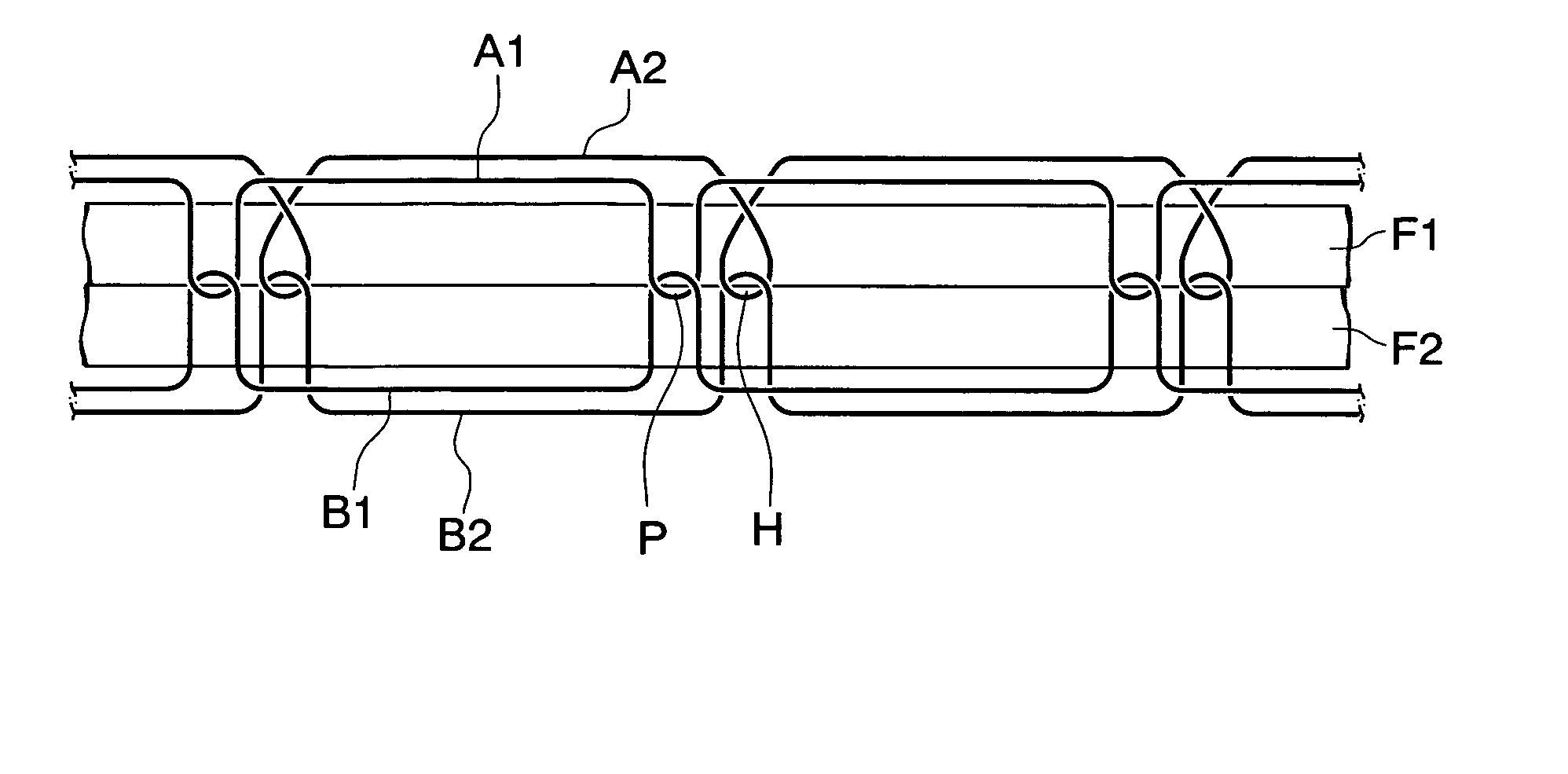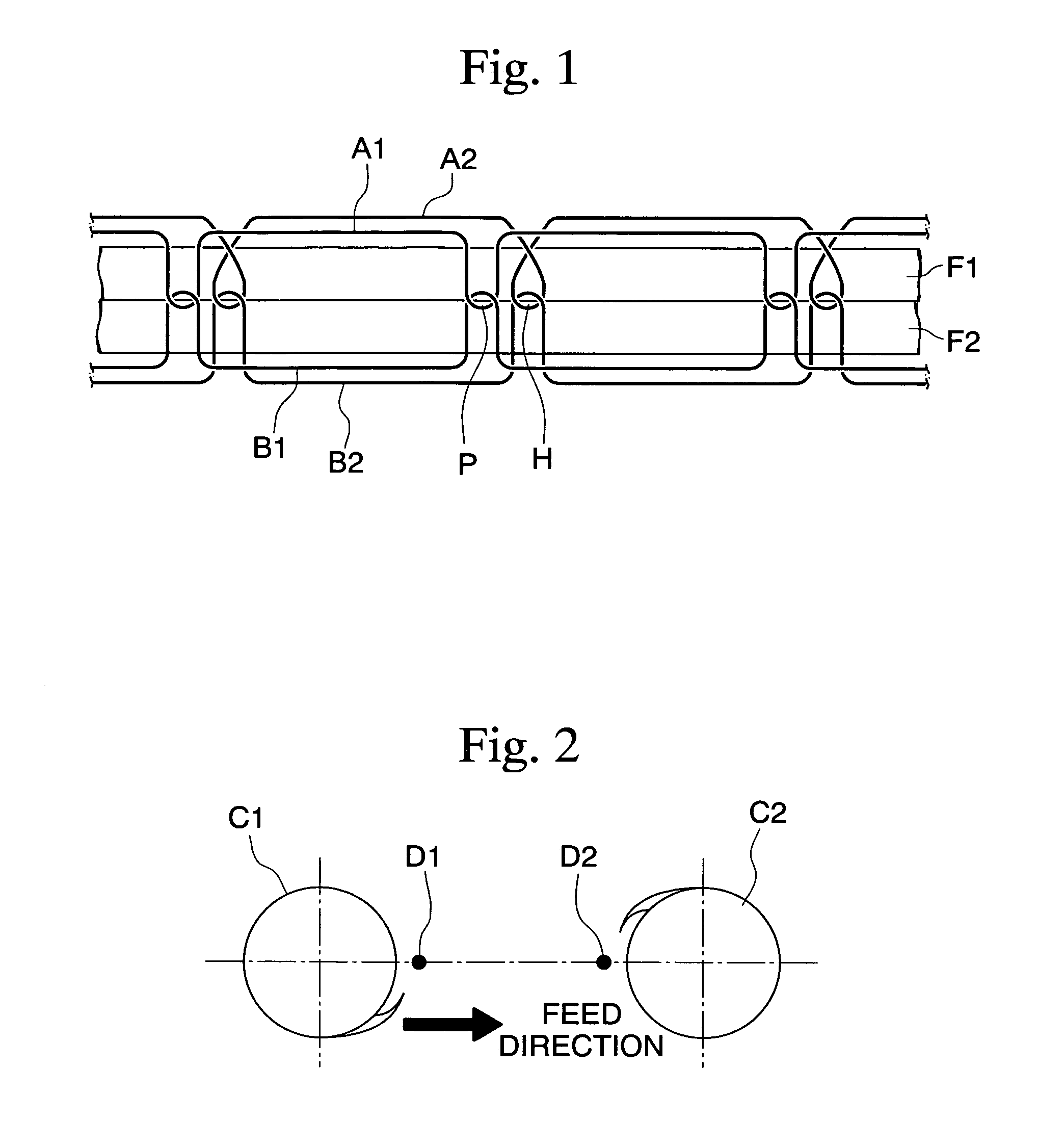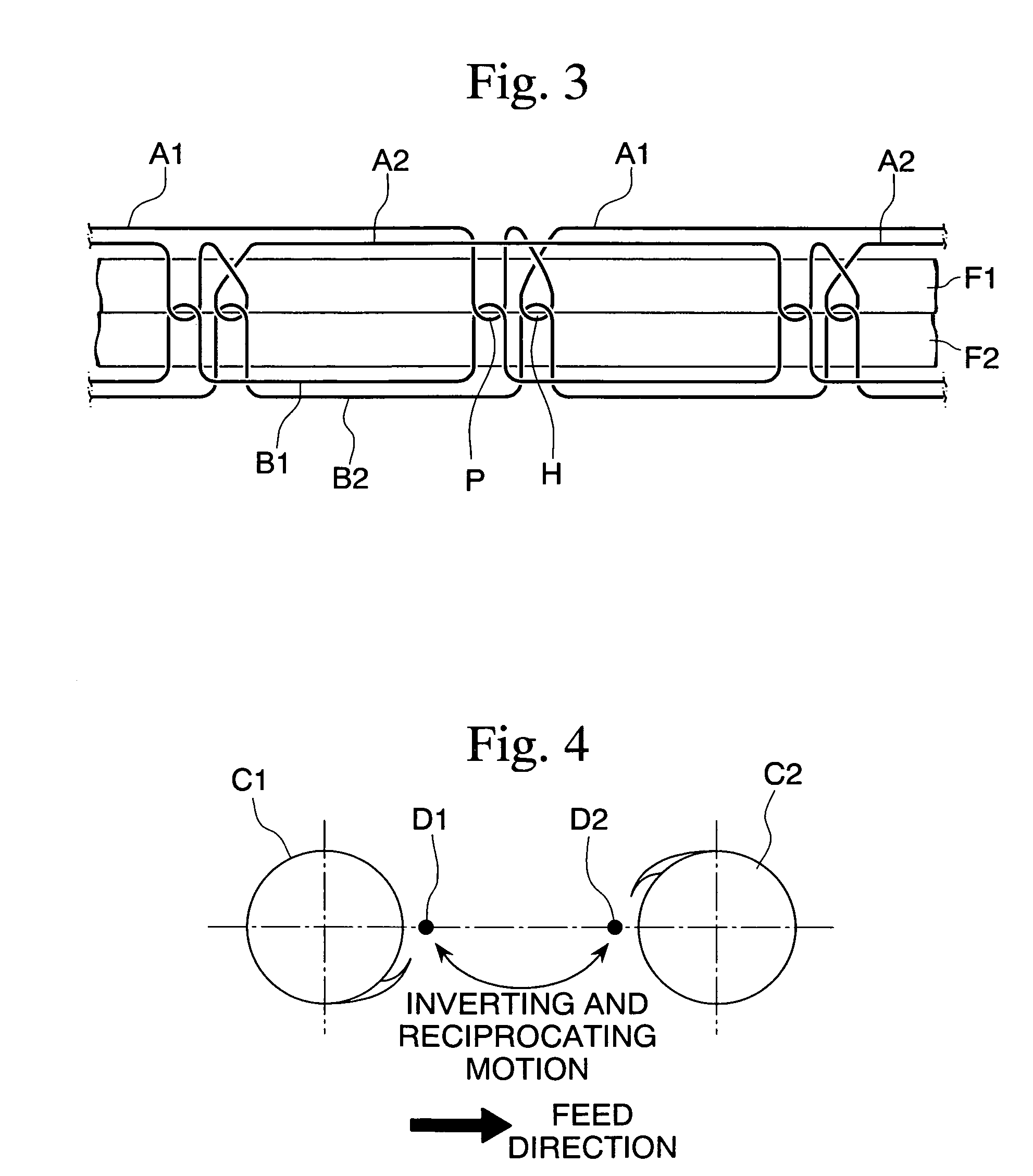Seam forming method using sewing machine
a sewing machine and seam forming technology, applied in the field of seam forming methods using sewing machines, can solve the problems of high load on each seam, inconvenient operation, and inability to sew at the same time, and achieve the effect of sufficient sewing speed and easy operation
- Summary
- Abstract
- Description
- Claims
- Application Information
AI Technical Summary
Benefits of technology
Problems solved by technology
Method used
Image
Examples
first embodiment
[0040]The first embodiment of the seam forming method of the present invention will be explained with reference to FIGS. 1 and 2.
[0041]The seam in this embodiment is produced by lockstitching using two vertical needles. The sewing machine used here is obtained by improving conventional twin-needle sewing machines, and in the improved sewing machine, the direction along which the needle and the shuttle hook face each other is perpendicular to that in conventional sewing machines. That is, in the sewing machine in the present embodiment, a shuttle hook C1 which rotates in the counterclockwise direction, a needle D1, a needle D2, and a shuttle hook C2 which rotates in the counterclockwise direction are arranged in the direction along which the cloth (or material) is fed.
[0042]In the operation, first, the amount of feed of the cloth at the needle D1 (i.e., closer to the operator) and the amount of feed of the cloth at the needle D2 are set using a feed amount setting device (not shown) ...
second embodiment
[0047]The second embodiment of the seam forming method of the present invention will be explained with reference to FIGS. 3 and 4.
[0048]The seam in this embodiment is produced by performing lockstitching using two vertical needles which are reciprocated so as to invert the positions of the needles along the feed direction.
[0049]The sewing machine used in the present embodiment is obtained by improving conventional twin-needle sewing machines, and in the improved sewing machine, the direction along which the needle and the shuttle hook face each other is perpendicular to that of the conventional sewing machines and the needle bar to which the two needles are attached is inverted by 180° for each stitch so as to perform reciprocating motion. That is, in the sewing machine of the present embodiment, two needles D1 and D2, which are inverted by 180° for each stitch so as to perform reciprocating motion, are positioned between a shuttle hook C1 which rotates in the counterclockwise direc...
third embodiment
[0057]The third embodiment of the seam forming method of the present invention will be explained with reference to FIGS. 4 and 5.
[0058]The seam in this embodiment is also produced by performing lockstitching using two vertical needles which are reciprocated so as to invert the positions of the needles along the feed direction.
[0059]The sewing machine used in the present embodiment is obtained by improving the sewing machine used in the second embodiment as shown in FIG. 4 in a manner such that the feeding operation is stopped for every two stitches (by each needle). That is, in the sewing machine of the present embodiment, two needles D1 and D2, which are inverted by 180° for each stitch so as to perform reciprocating motion, are positioned between a shuttle hook C1 which rotates in the counterclockwise direction and a shuttle hook C2 which also rotates in the counterclockwise direction, where the shuttle hooks are arranged in the direction along which the cloth is fed, and the feed...
PUM
 Login to View More
Login to View More Abstract
Description
Claims
Application Information
 Login to View More
Login to View More - R&D
- Intellectual Property
- Life Sciences
- Materials
- Tech Scout
- Unparalleled Data Quality
- Higher Quality Content
- 60% Fewer Hallucinations
Browse by: Latest US Patents, China's latest patents, Technical Efficacy Thesaurus, Application Domain, Technology Topic, Popular Technical Reports.
© 2025 PatSnap. All rights reserved.Legal|Privacy policy|Modern Slavery Act Transparency Statement|Sitemap|About US| Contact US: help@patsnap.com



